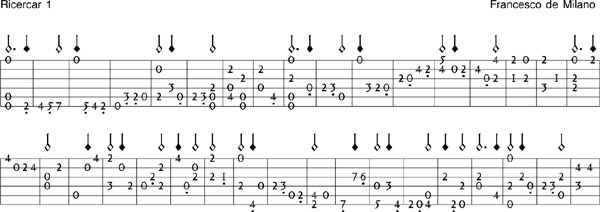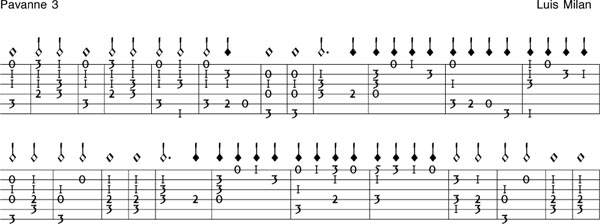|
|
 |
|
|
|
History and Development
Tablature is an ancient system of music notation for stringed instruments that is still in use today. It first achieved popularity during the Renaissance. The lines of a staff represent the strings of instruments such as the lute, vihuela and the guitar. Tablature for mandolin has four lines representing its four courses. Guitar tab consists of six lines representing its six strings. Other instruments have more or less lines representing the amount of their respective strings. In place of musical notes, left hand fret positions are represented by either numbers or letters on these lines. Rhythm is dictated above the staff. It is reduced to the shortest note values. The longer, or legato, notes are left to the interpretation of the performer.
Below you will find a few excerpts representing various types of tablature. Spain and Italy use numbers to represent the frets. Unlike modern guitar tablature, the highest line of the staff represents the lowest pitched course or string of the instrument. A "2" on the highest line would indicate the performer should fret the lowest course or string at the second fret. When playing this tablature on the guitar, one must tune the third string down a half step, from "G" to "F#". The following excerpt is from a piece written for lute , during the Renaissance, by Italian composer Francesco de Milano (1497-1543).
Modern Guitar Arrangement: French tablature differs from the Spanish and Italian systems in that it uses letters instead of numbers to indicate which fret to play and that the highest line of tablature represents the highest pitched course of the instrument. The letter "A" represents the open string. The frets follow the alphabet from there. Bach arranged this Fugue, (BWV1000), for the lute. He originally wrote it as the third movement of his solo violin sonata in D minor. Bach transcribed it to G minor in order to accomodate the lute's range. The tuning of the standard six course lute lute from low to high is G-C-F-A-D-G. There are bass notes in this arrangement that must be played by additional bass strings or courses. They are notated by a "/" in front of a letter below the sixth string or course. "/a" would mean an open seventh string or coarse. "///a" indicates an open ninth string. Having said this, bare in mind that many arrangements use the spaces of the staff to represent the strings. In a six-line staff one is able to represent seven strings. This fugue is arranged in such a way. The piece gets on to the extra low strings rather quickly, but the opening measures of this transcription may be played by guitarists, as written, by tuning the third string (G) 1/2 step down to an F#. The key becomes E minor. To play the entire piece on the guitar, it is usually played in A minor
Modern Guitar Arrangement: Luis Milan used numbers to represent frets of his vihuela. Like modern guitar tablature, the highest line of represents the highest tuned course on the instrument. Tune the 3rd string 1/2 step down to F#.
Modern Guitar Arrangement:
|
Facsimiles of Ancient Tablature
Five Percent Discount on all shopping cart orders over $100 - Free Basic Shipping for orders over $200
No Credit Card? No Problem! Checks and money orders accepted for the following. Click Here For The Form.
Email for Worldwide Shipping Quotes
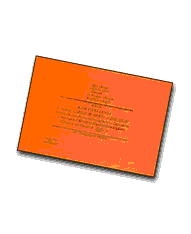 |
Straube, Due Sonate A Liuto Solo (1746) Tablature by Rudolf Straube
|
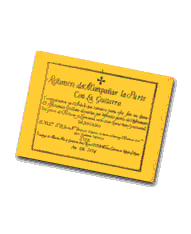 |
Santiago de Murcia: Resumen de Acompanar La Parte Con La Guitarra Book 97354 - $31.95 - Out Of Print - The Resumen de acompanar, printed in 1714, is earlier of the two surviving collections of music for the five course baroque guitar by the Spaniard, Santiago de Murcia. A facsimile of the later manuscript collection of 1732, Passacalles y Obras de guitarra, now in the British Library, has already been published by Chanterelle. These two collections single Murcia out as the most prolific and the most versatile of the Spanish guitarists. Murcia provides a table of the symbols of the Italian guitar alphabet together with the chords they represent written out in tablature, as well as detailed explanations of all symbols in the book. Written in archaic Spanish with English introductions. Publisher: Chanterelle. Overall Difficulty: Advanced. 144 Pages. |
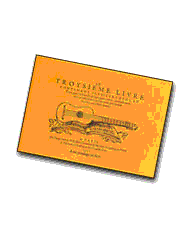 |
Simon Gorlier & G. Morlaye: 4 Renaissance Guitar Bks (1551-1553) Book 97353 - $46.95 - Out of Print - This facsimile edition is a complete same size photographic reproduction of the only known surviving copies of the guitar tablature books of Simon Gorlier and Guillaume Morlaye. Today the volume containing these 4 books is in the Conton library in Switzerland. These four books offer a full and varied collection of music ranging from excellent fantasias of intabulation of the popular chansons of the day and a wide range of Italian an Frence dance music of grear charm. They are herewith made available, not only to the specialist playing on reconstructions of early instruments, but to the modern guitarist, whose repertoire can be richly enhanced by them. In Spanish with an introduction in English. Publisher: Chanterelle. Overall Difficulty: Advanced. 288 pages. |
Another Ancient Guitar Text
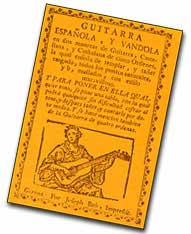 |
Amat: Guitarra Espanola by Joan Carles Amat
|
|
Click Here For The Form. |

Return To The Sologuitarist Network
support@sologuitarist.net
© 2001 Solo Guitarist Network - All Rights Reserved
